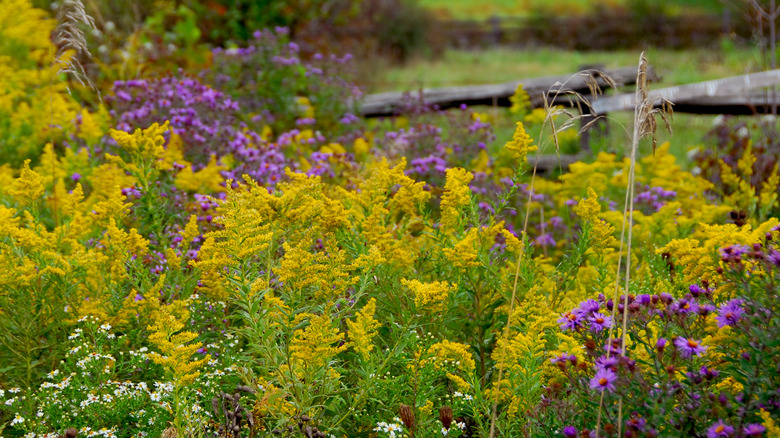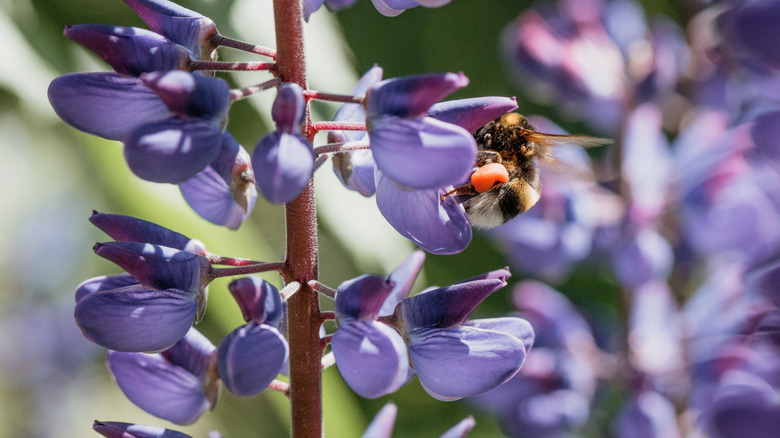The Best Plants To Grow For A Biodiverse Garden
In response to the staggering loss of wildlife populations over the last 50 years, many gardeners are converting their grassy lawns into habitats that welcome insects, birds, and other wildlife. Gardeners who want to join this nature-positive approach should know that one of the easiest ways to bring biodiversity into their garden is to grow native plants. In the U.S., some of the most important plants to grow for a biodiverse garden include columbines (Aquilegia spp.), Asters, yarrow (Achillea spp.), and coneflowers (Echinacea spp.), all of which help support robust ecosystems.
Thanks to their long-forged relationships with birds and insects, native plants excel at providing food and habitat for both insects and other wildlife. However, choosing native plants is more complicated than you think — some plants have more value in an ecosystem than others, including the four plants listed above. There's a reason these particular plants are so important in creating biodiverse gardens — U.S. native plants, including certain columbines, Asters, yarrow, and coneflowers, are considered keystone species in their regions, making them crucial plants in local ecosystems that support more insects and birds compared to other plants.
Which native plants you should grow in your garden to promote biodiversity
To bring more pollinators into your yard and garden, gardeners can include flowering plants such as different types of Coreopsis, ironweed (Vernonia spp.), goldenrod (Solidago spp.), lupine (Lupinus spp.), evening primroses (Oenothera spp.), sunflowers (Helianthus spp.), and Penstemons in their flower beds. Choose yellow rabbitbrush (Chrysothamnus viscidiflorus), coyote willow (Salix exigua), and serviceberries (Amelanchier spp.) for shrubs that are keystone species. As for trees, North American native oaks (Quercus spp.), river birch (Betula nigra), and aspen trees (Populus tremuloides) are also key members of a thriving and biodiverse garden and yard.
Now that you have a handy list of plants to help grow your own biodiverse garden, there's a catch. Not all species of these keystone flowers, shrubs, and trees will thrive in all locations. Those hoping to cultivate a biodiverse garden need to learn which plants originate in their particular ecoregion. There are many different species of oak trees and goldenrods, for instance — so gardeners should check with their local native plant societies, botanical gardens, or enter their zip codes into plant identification websites, such as Native Plant Finder, to identify the best options for their specific locations.

